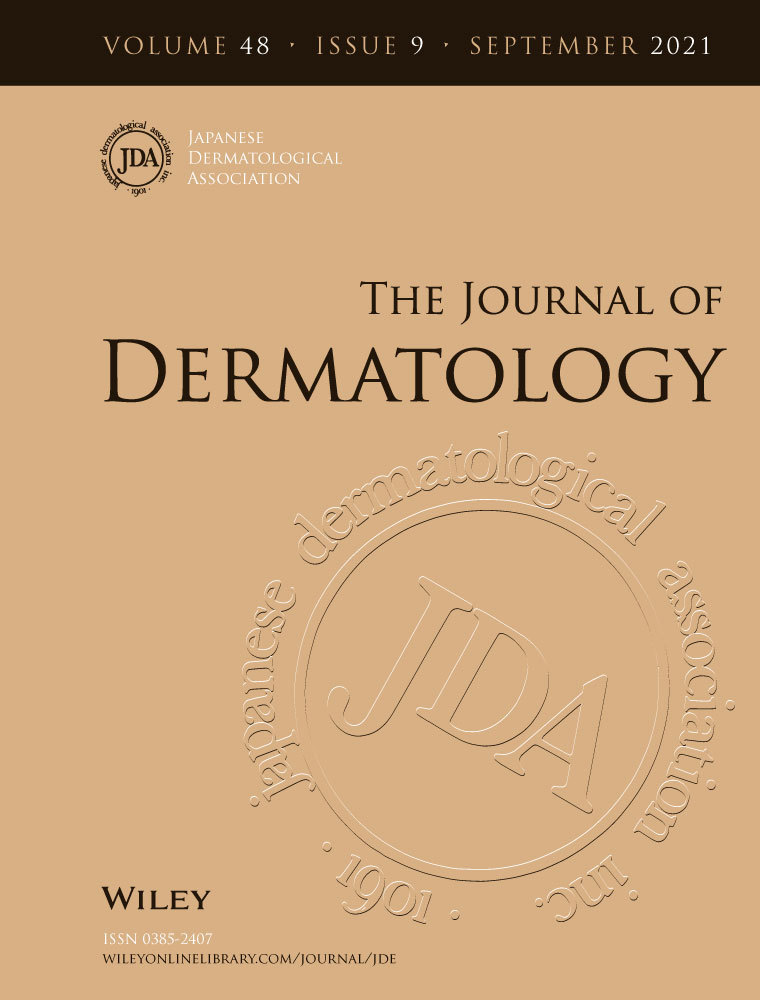Dermatomyositis-like eruptions and fasciitis with novel compound heterozygous MEFV mutations: Newly recognized features of a variant of familial Mediterranean fever
Abstract
Familial Mediterranean fever (FMF) is an autoinflammatory disease characterized by recurrent febrile attacks and serositis. The diagnosis of FMF has been based on clinical criteria, including frequent symptoms and good response to the treatment with colchicine. Some patients with FMF show skin or muscle manifestations, which may be confused with other cutaneous or muscle disorders. Here we report a female in her 40s with periodic fever, migratory myalgia, dermatomyositis-like dermatitis, arthralgia, pharyngalgia, and lymphadenopathy. The initial clinical differential diagnosis included dermatomyositis, malignant lymphoma, and adult-onset Still's disease. However, the following examinations could not explain her pathological condition with such diseases. In particular, findings from muscle and fascial biopsy demonstrated severe inflammatory cell infiltrate in the fascia, suggesting fasciitis as a possible cause of migratory myalgia. We examined the possibility of autoinflammatory diseases by genetic testing. Accordingly, she was found to have novel compound heterozygous mutations (L110P, E148Q, and P369S) in the MEFV gene. Given her genetic mutations and favorable response to colchicine, she was finally diagnosed as a variant of FMF with myalgia and previously unprecedented skin eruptions.
CONFLICT OF INTEREST
None declared.




